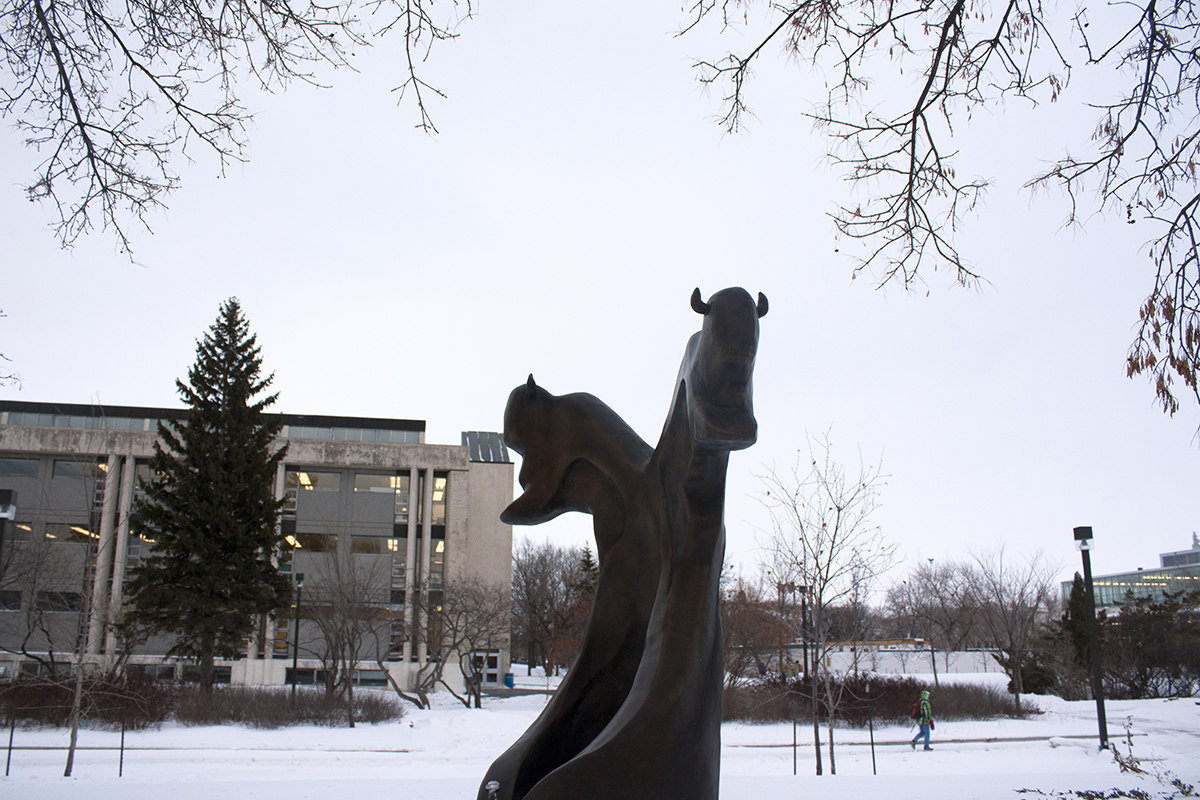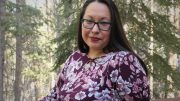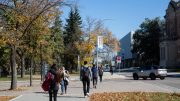In light of the University of Manitoba’s five-year strategic plan, the university community gathered at the U of M earlier this month to learn about various approaches for “decolonizing” post-secondary institutions from across the nation.
The plan, titled Taking Our Place: University of Manitoba Strategic Plan 2015-2020, exclusively prioritizes indigenous achievement and ways of knowing at the province’s only major research university.
About 15 per cent of Manitoba’s population is indigenous – one of the highest in Canada.
That number is growing. Predictions based on Statistics Canada Census data indicate that indigenous people will compromise nearly 19 per cent of the province’s population by 2026.
In a statement following a Maclean’s magazine article on racism in Winnipeg, U of M president David Barnard commented on the need for improved efforts to decolonize the university.
“We’re trying to work with indigenous leaders to try to build a welcoming environment on campus and to make the indigenous reality in this province a larger part of what’s visible at the University of Manitoba,” Barnard said.
Established almost 140 years ago under the passage of an act that described the university’s purpose as one of “raising the standard of higher education in the province, and of enabling all denominations and classes to obtain academical degrees,” according to Barnard, the U of M remains committed to fulfilling that mandate.
Proportionate achievement
Deborah Young, the executive lead of indigenous achievement at the U of M, told the Manitoban in an email interview that she is excited to promote indigenous learning at the university.
“Not only is indigenous achievement a standalone priority, but it is woven throughout all of the priority areas, including an acknowledgement statement at the beginning, affirming the university’s commitment to advancing reconciliation efforts, connecting to indigenous students, staff, and academics, and forging new relationships with partners and communities,” said Young.
Since the summer, Young told the Manitoban, she has organized planning sessions with elders, indigenous support staff, academics, and non-indigenous allies.
For the first time, Young said, the indigenous community came together to build on the existing foundation of support at the university, ranging from indigenous recruitment and student support services to the hiring of indigenous scholars, working to advance indigenous ways of knowing.
Strategic plans
The 2009-2014 Strategic Planning Framework was intended to guide decision-making, providing some direction and a degree of specificity, about programs, structures, and the allocation of resources and energy at the University of Manitoba.
Building on the backbone of the former five-year plan, the 2015-2020 strategic plan signals strong commitment to indigenous achievement as a separate, but integral, priority in the strategic plan.
University senators were generally supportive of the increased focus on, and commitment to, indigenous achievement indicated throughout the draft of the plan. Senior administration at the U of M will be held accountable, ensuring that priorities, goals, and supporting actions of the strategic plan are achieved and that operational plans are developed in pursuit of the common goal towards indigenous achievement.
As the first priority for implementing the plan, the university will develop a framework to ensure that its priorities are implemented. The framework will ensure that university administration is accountable to the board of governors.
So far, some baseline targets have been established at the U of M, such as those for indigenous enrolment.
Now, the university is tasked with developing an assessment framework that encompasses both the qualitative and quantitative dimensions to measure progress on priorities—such as indigenous achievement—and be accountable to the board of governors, the senate, and the university community.
Some skeptical senators
A draft of the 2015-2020 Strategic Plan was provided to the senate for comment in the fall.
According to the senate minutes, the draft generated a significant amount of thoughtful feedback at the senate meeting. As part of a broader consultative process, Joanne Keselman, vice-president (academic) and provost, said that the strategic planning committee took that into account when developing the final draft of the strategic plan.
With respect to equity and diversity, Tina Mai Chen, department head of history, argued at the senate meeting that gender and indigenous issues overshadowed other important issues in the strategic plan.
Chen proposed that the document clearly outline the university’s commitment to equity and diversity in broader terms. She cautioned that, given the current fiscal climate, any decisions about what constitutes an appropriate range of academic programs offered at the university should be based on academic priorities. With the university’s international engagement in mind, Chen suggested supporting actions that might promote or foster knowledge of other parts of the world.
Several members also expressed concern that, with a focus on quantitative metrics and those tied to revenue and research dollars, research in basic sciences and humanities may not be measured using quantifiable means.
Young said that measured outcomes and results are significant indicators of success.
“As we are developing our implementation plans both for the Strategic Enrollment Management and Taking Our Places, there will be clear activities identified, along with timelines and indicators of success,” she said.
“I am also working on developing a new Aboriginal Self-Declaration Strategy to help increase more awareness on the importance of self-declaration,” said Young, adding that obtaining reliable data about those of indigenous identity is key for relevant assessment.
Indigenous education elsewhere
Many universities and colleges have put indigenous education at the forefront of their plans.
At the recent Decolonizing the University workshop at the U of M, speakers presented about building new relations and working towards reconciliation and coordination to support them, affirming that decolonization is a mindful process that needs to be reflected in secondary school and university curricula.
Robina Thomas (Qwul’sih’yah’maht), director of indigenous academic and community engagement at the University of Victoria, said that the university she represented introduced programs for promulgating indigenous norms and rights, including an elders’ lounge, drum groups, counselling services, an office of indigenous affairs, academic and community engagement, and hiring of faculty members.
“We are losing our language,” Thomas said, adding that the loss of traditional languages should prompt significant reflection.
Linc Kesler, associate professor of First Nations studies and English at the University of British Columbia, suggested the need for an exchange of ideas and information from within and between communities and institutions, derived from a long history of relations between people, places, and the land.
Kesler said the indigenous connection must be made to “train another generation of students, experts, and practitioners who look back on this basic knowledge about our country, culture, and history.”
Cynthia Wesley-Esquimaux, vice-provost of Aboriginal initiatives at Lakehead University in Thunder Bay, said that comprehensive dialogue to decolonize universities must be inclusive and socially justifiable; identifying existing barriers and boundaries, and incorporating indigenous knowledge and world views to make visible commitments to inclusion and change.
“Indigenous people are duelling with academies on one hand, and duelling with the dire results of the imposition of artificial communities on the other hand,” Wesley-Esquimaux said.
In her interview with the Manitoban following the public workshop, Young said that, although more needs to be done at the university, she believes that “as an academic institution, we are certainly heading in the right direction.
“As a Cree woman and a former university student, although there is much work that still needs to be done, it truly delights me to see post-secondary institutions stepping up their efforts on moving indigenous achievement forward.”





